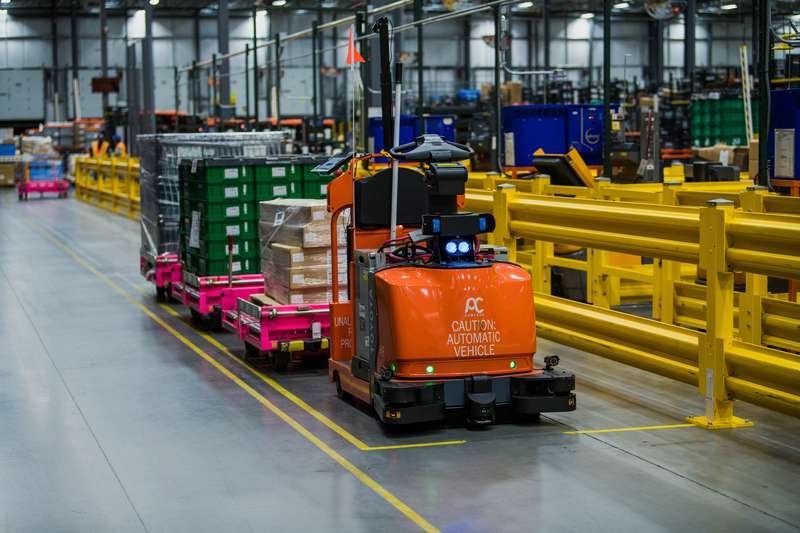| Industrial robotics has come a long way since its inception, and it continues to evolve at an incredible pace. Today, robots are a vital part of modern manufacturing. They help to provide speed, precision, and efficiency in tasks that would otherwise be impossible or impractical for humans to perform.
Vinayak Bhat,
General Manager,
Bastian Solutions
In recent years, industrial robotics has undergone a significant transformation, with new advancements in technology driving innovation and growth in the manufacturing sector. Early robotics solutions were mostly used in the automotive industry, where they performed tasks such as welding car chassis together. However, with time, robotics has become more versatile. They are now seen in food processing, electronics, and pharmaceutical warehouse.
One of the most significant developments in industrial robotics in recent years has been the emergence of collaborative robots, or cobots. These robots are designed to work alongside humans, performing tasks that require prominent levels of accuracy and repeatability. Cobots are equipped with sensors that allow them to detect the presence of humans and stop working if they come too close, making them safe to work with.
Another major development in industrial robotics is the use of mobile robots. These robots are designed to move around the factory floor and perform tasks such as material handling and inspection. Mobile robots are equipped with sensors and cameras that allow them to navigate the factory floor and avoid obstacles.
Key trends in Industrial Robotics

AGV

Vinayak Bhat, General Manager, Bastian Solutions
The use of industrial robots is on the rise, and this trend is expected to continue in the coming years. One of the key trends driving the growth of industrial robotics is the need for greater flexibility in manufacturing. With consumers demanding more customised products, manufacturers need to be able to quickly adapt their production processes to meet changing demands. Industrial robots are being designed to be more flexible and adaptable, making it easier for manufacturers to switch from one product to another.
Another trend in industrial robotics is the use of cloud computing and the Internet of Things (IoT). Robots are being equipped with sensors that collect data on their performance and transmit it to the cloud, where it can be analysed in real-time. This data can be used to improve the performance of the robots and optimise the manufacturing process.
The use of Artificial Intelligence (AI) and Machine Learning (ML) is another trend in industrial robotics. AI and ML are being used to develop robots that can learn from their experiences and improve their performance over time. These robots can perform tasks that are too complex for traditional robots to handle, such as recognising objects and making decisions based on visual data.
Flexible and Adaptable Robots
One of the challenges of industrial robotics has been designing robots that can be quickly reprogrammed to perform different tasks. Traditionally, robots were designed for specific tasks, and reprogramming them to perform a different task was a complex and time-consuming process. However, with the emergence of collaborative robots and the use of AI and ML, robots are becoming more flexible and adaptable.
Collaborative robots are designed to be easy to programme, and they can be reprogrammed quickly to perform different tasks. They are also designed to work alongside humans, making it easier for manufacturers to introduce them into their production processes.
AI and ML are also being used to develop robots that can adapt to changing production needs. These robots can learn from their experiences and adjust their performance based on the data they collect. For example, a robot that is designed to pick and place objects can learn to recognise several types of objects and adjust its grip to pick them up more effectively.
AI and ML are having a significant impact on industrial robotics like pick-and-place robots, enabling robots to perform tasks that were once thought impossible. With advanced computer vision and machine learning algorithms, robots can now recognise and sort different types of products with greater accuracy and speed than ever before. This has revolutionised industries such as manufacturing and logistics, where robots are now being used to automate tedious and repetitive tasks, freeing up human workers to focus on more complex and creative tasks.
Evolving Landscape of Robotics
The use of industrial robots is no longer limited to the automotive industry; robots are now being used in a wide range of industries, from food processing to pharmaceuticals. The flexibility and adaptability of robots are making it easier for manufacturers to meet the changing demands of consumers, and the use of AI and ML is opening new possibilities for robots to perform tasks that were once thought to be impossible. Industrial robotics is undoubtedly an exciting field, and it will be fascinating to see how the technology becomes more approachable as it continues to evolve in the future.












